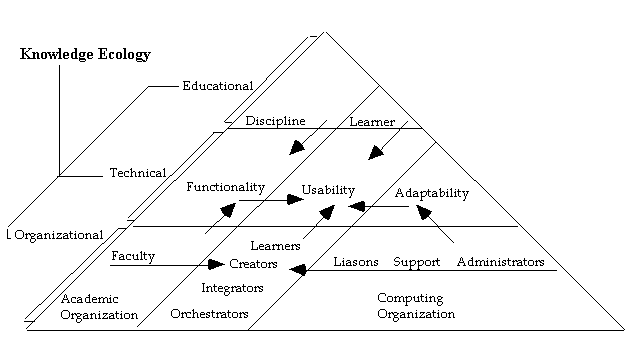|
The following projects, organizations and participants were the focus of this study:
Project: ESCAPE (HyperCard and HyperNews) Organizations: Educational Research and Information Systems (ERIS, Purdue) Participants: Hopper, Lawler, LeBold, Putnam, Rehwinkel, Tillotson, Ward Project: TODOR (BLOX) & Mechanics 2.01 (cT, Athena) Organizations: Athena and Academic Computing (AC, MIT) Participants: Bucciarelli, Daly, Jackson, Lavin, Schmidt Project: Physical Geology Tutor (AthenaMuse) Organizations: Center for Educational Computing Initiatives (CECI, MIT) Participants: Davis, Kinnicutt, Lerman, Schlusselberg Project: Context32 (Intermedia, StorySpace) Organizations: Institute for Research and Information Scholarship (IRIS, Brown) Participants: Kahn, Landow, Yankelovich [See the Switchboard for further information.] |
Successful projects began with goals for providing both improved representations of the discipline and increased learner involvement. Critical technical characteristics of software included appropriate functionality, usability for interaction and creation, and adaptability for availability or the change inherent in distributed computing environments. The courseware that was created consisted of complex learning environments that required regular use and maintenance to survive.

The authors who developed the learning environments needed to maintain them and acquire the resources upon which regular delivery depended. Three different organizational structures were found which provided for the continuation of informational, technical, human, and financial resources. Within these organizational structures, learners sometimes became authors, while authors became the managers of ongoing production projects where major educational, technical and organizational factors needed to be continuously balanced. Future courseware projects should be viewed as experiments and treated as opportunities to further define the framework of concepts developed in this study.